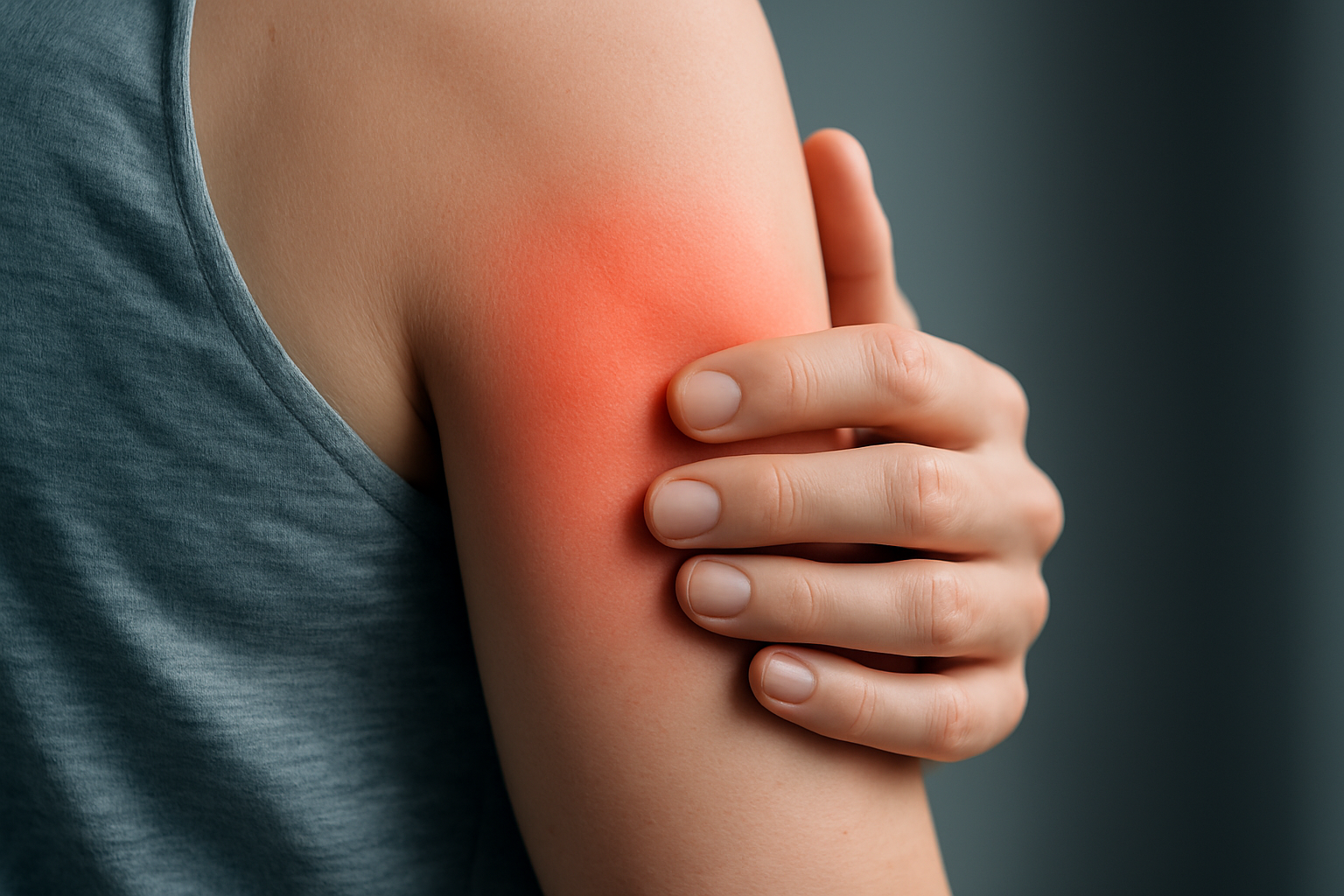
Mounjaro & Skin Pain: Why It Happens and How to Find Relief
Some Mounjaro users report unusual skin pain or nerve sensitivity, including burning or tingling sensations. This pharmacist-written guide explains what might be causing it, how to manage symptoms safely, and when to seek medical advice.
Get GLP-1 Price Alerts
Weekly price updates delivered to your inbox.
Allodynia (Skin Pain): What It Is, Why It May Happen on GLP-1 Medications, and How to Find Relief
If you're taking a GLP-1 receptor agonist such as Mounjaro (tirzepatide) or Wegovy (semaglutide) and notice skin pain from light touch, clothing, or mild temperature changes, you may be experiencing a condition called allodynia.
While not commonly listed among the side effects of GLP-1s, some patients describe this unusual nerve sensitivity after starting treatment. This article explains what allodynia is, why it might occur in people using GLP-1 medications, and how you can manage it safely and effectively.
What Is Allodynia?
Allodynia is a type of nerve pain where normal sensations—such as brushing your skin, showering, or wearing clothes—feel unexpectedly painful. It’s caused by changes in how the central nervous system (CNS) processes pain, often linked to a phenomenon called central sensitisation, where pain pathways become hyperactive or misfire.
Types of Allodynia:
- Tactile (Mechanical) – Pain from light touch or pressure
- Thermal – Pain from mild temperature changes
- Movement-based – Pain during normal movement of skin or joints
What Causes Allodynia?
Allodynia is seen in various neurological and chronic health conditions, including:
- Peripheral neuropathy (e.g. due to diabetes or chemotherapy)
- Fibromyalgia (chronic widespread pain disorder)
- Migraine (where nerve sensitivity is heightened)
- Post-viral syndromes
- Certain medications — including, potentially, GLP-1 receptor agonists
GLP-1 Medications and Allodynia: Is There a Link?
GLP-1 receptor agonists like Mounjaro and Wegovy are highly effective in managing blood sugar and supporting weight loss. However, a small subset of users have reported increased pain sensitivity or skin discomfort during treatment.
While research is still emerging, the following mechanisms have been proposed:
1. Neuroinflammation and Microglial Activation
GLP-1 receptors are found in areas of the nervous system that regulate pain. When activated, they may influence microglial cells, which help control inflammation in the brain and spinal cord. If overstimulated, these cells may contribute to heightened pain perception.
2. Altered Pain Modulation in the Brain
GLP-1 signalling affects brain regions like the hypothalamus, amygdala, and periaqueductal grey, which are involved in pain control. It may also interact with opioid and serotonin pathways. Disruption here could make pain signals feel stronger or more frequent.
3. Glucose and Insulin Changes Impacting Nerve Function
Changes in blood sugar and insulin levels, especially in people with type 2 diabetes, may affect how nerves function. This includes oxidative stress and ion channel imbalances, both of which may contribute to neuropathic symptoms.
4. Gut-Brain Axis and Vagal Nerve Activity
GLP-1s influence the vagus nerve, which plays a key role in both digestion and inflammatory responses. If vagus nerve signalling becomes dysregulated, it may heighten pain sensations.
Nutritional Factors That Can Worsen Nerve Pain
Many people on GLP-1s eat less due to appetite suppression. This can lead to deficiencies in key nutrients that protect nerve health. If you’re experiencing allodynia, it’s worth reviewing your diet or discussing supplementation with your GP or pharmacist.
Important Nutrients for Nerve Health:
- Vitamin B12 – Essential for nerve repair and function
- Magnesium – Helps regulate nerve signals
- Omega-3 fatty acids – Anti-inflammatory effects may reduce neuroinflammation
- Vitamin D – Linked to both immune function and chronic pain regulation
- Alpha-lipoic acid – Antioxidant used in diabetic neuropathy
- Probiotics – Support the gut-brain axis, which plays a role in inflammation
Managing Allodynia While on GLP-1 Medication
If you’re experiencing new or worsening nerve sensitivity, try the following strategies:
✅ Lifestyle and Comfort Measures:
- Wear soft, loose clothing (cotton, bamboo)
- Use lukewarm water instead of hot or cold
- Avoid tight waistbands or friction-prone fabrics
- Get regular gentle exercise (e.g. walking or stretching)
✅ Skincare and Topical Options:
- Lidocaine patches or creams for localised relief
- Menthol or capsaicin-based creams (test on small areas first)
- Fragrance-free moisturisers (e.g. E45, CeraVe)
✅ Medical Interventions:
If pain persists, your GP may recommend:
- Blood tests to check B12, vitamin D, or magnesium
- Neurological assessment or nerve conduction studies
- Prescription medications like:
- Gabapentin or pregabalin
- Tricyclic antidepressants (e.g., amitriptyline)
- SNRIs (e.g., duloxetine) for nerve pain
When to Speak to Your GP
You should seek medical advice if:
- Pain is progressive, severe, or unexplained
- You have numbness, tingling, or weakness
- Symptoms are interfering with sleep, movement, or quality of life
- You suspect a link between your symptoms and GLP-1 medication
Your GP can carry out a detailed review and adjust your treatment plan if necessary.
Summary
While not a commonly listed side effect, there is a theoretical link between GLP-1 medications like Mounjaro or Wegovy and increased nerve sensitivity in some users. This may manifest as allodynia—pain from normally harmless sensations.
Managing nutrition, staying active, and seeking early support can help reduce symptoms and improve comfort during GLP-1 treatment.
If you're unsure whether your pain is medication-related, it’s always best to speak to a healthcare professional.
References
- Shirazi et al. (2022). Neuroinflammation and Pain Sensitivity in GLP-1 Receptor Modulation. Journal of Neuroinflammation.
- Secher et al. (2014). GLP-1 and Its Role in CNS Pain Processing. Cell Metabolism.
- Yuan et al. (2020). The Impact of Insulin Dysregulation on Neuropathy and Pain. Diabetes & Metabolism.
- Holst et al. (2019). GLP-1, the Gut-Brain Axis, and Pain Modulation. Nature Reviews Endocrinology.
For more expert-written advice on GLP-1 medications and health optimisation, visit GLPCompare.com.
Get Price Alerts
Get weekly price alerts for Mounjaro and Wegovy straight to your inbox.